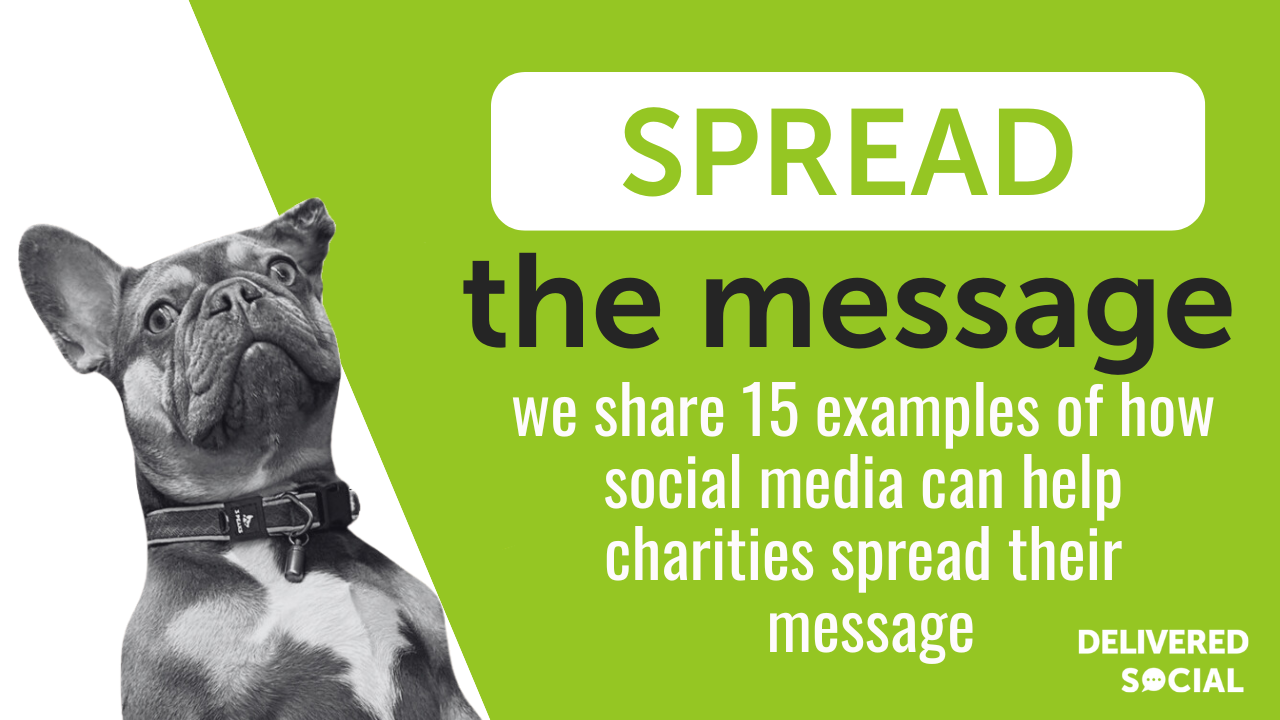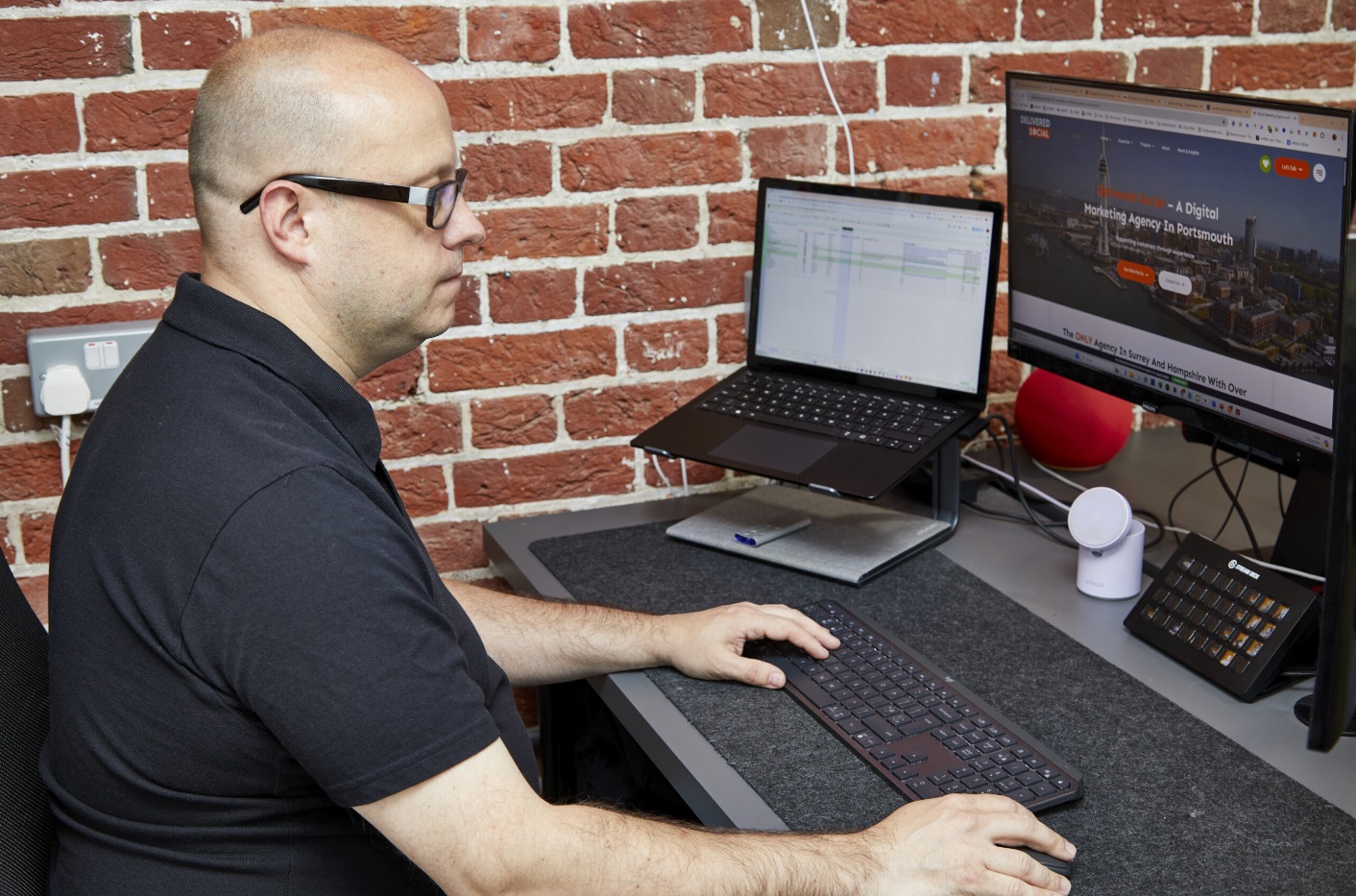
Social media platforms are powerful vehicles for communication and influence, presenting vast opportunities for charities to engage supporters, boost donations, and amplify their mission globally. But how does social media help charities achieve these goals?
In this blog, we explore 15 ways in which social media helps charities to spread their message, highlighting how these digital platforms are reshaping charity engagement and support mobilisation.
Whether you’re a charity seeking to elevate your social media strategy or simply interested in social media’s transformative impact on the charity sector, this guide offers a succinct overview. Let’s dive in!
We’ll cover:
- Amplifying Reach: Global Connection at Your Fingertips
- Real-time Updates: Keeping Supporters in the Loop
- Engaging Content: More Than Just Words
- Interactive Engagement: Direct Dialogue and Instant Feedback
- How Social Media Helps Charities with Volunteer Recruitment and Coordination: Mobilising the Online Community
- Hashtag Campaigns: Amplifying the Message
- Celebrity Involvement and Influencer Advocacy: Boosting Visibility
- Online Events: Bringing People Together Virtually
- Peer to Peer Sharing: A Chain Reaction of Awareness
- Community Building: Uniting for a Cause
- Education: Spreading Knowledge and Inspiring Action
- Calls to Action: Mobilising the Masses
- Viral Challenges: Captivating the Digital World
- Fundraising Tools: Making Giving Easier
- Advocacy: Rallying Support for Policy Changes
Amplifying Reach: Global Connection at Your Fingertips
In the digital age, understanding “how social media helps charities” unveils a broad spectrum of benefits. Primarily, social media dramatically boosts a charity’s reach. With billions of users globally, charities can engage audiences beyond geographical confines from anywhere, anytime.
A well-constructed post or gripping video can traverse from London to New York to Sydney within hours, granting the charity a global platform for their cause. This unrivalled reach offered by platforms like Facebook, Instagram, LinkedIn, Twitter, and TikTok significantly elevates visibility for charities, facilitating the sharing of their missions and attracting more supporters and donors.
Effective content creation is the linchpin, encouraging users to disseminate within their networks and trigger a ripple effect. The amplifying power of social media has proven to be an invaluable tool for charities, enhancing awareness, engagement, and fundraising potential.
Real-time Updates: Keeping Supporters in the Loop
Understanding how social media helps charities, the role of real-time updates is vital. These immediate notifications allow charities to share activities, progress, and achievements instantly, strengthening their connection with supporters.
Twitter is particularly suited for this, enabling charities to maintain steady communication with quick, digestible tweets. Charities can share news, live-tweet events, and make followers feel involved.
A noteworthy example is the Royal National Lifeboat Institution (RNLI), which uses Twitter to provide instant updates about their life-saving work. Regular posts about their crews’ activities and rescue missions create a sense of immediacy, reinforcing the importance of donations.
These updates create a continuous narrative around the charity’s work, keeping it fresh in followers’ minds, demonstrating the impact of donations, and fostering a stronger community around the cause.
Thus, real-time updates on social media are a potent tool for charities. They allow for timely communication, deepen supporter connection, and enhance visibility and engagement. In the digital age, constant, engaging communication is essential for maintaining an impactful digital presence.
Engaging Content: More Than Just Words
To truly grasp how social media helps charities, we must consider the compelling content they create. Engaging, visual content can tell a potent story and prompt action, a strategy adeptly employed by UNICEF.
UNICEF, globally recognised for its mission of protecting children’s rights, effectively utilises the mantra: show, don’t tell. While a well-known non-profit working on a significant cause, they understand that this alone won’t guarantee engagement.
A look at UNICEF’s Instagram reveals their approach. Their feed features powerful images and videos demonstrating the real lives and challenges of the children they protect. These visuals, paired with compelling captions, make the stakes feel real, humanise the issues, and provoke empathy, increasing the likelihood of audience engagement and action.
Moreover, their captions provide context, share successes, and crucially, call their audience to act, ensuring followers are participants, not just observers. UNICEF’s success underlines the power of engaging content in illustrating how charities are using social media in the best way. By showing rather than telling, charities can connect deeper with their audience and encourage meaningful action.
Interactive Engagement: Direct Dialogue and Instant Feedback
Interactive engagement stands as a pivotal answer to “how social media helps charities”. Social media platforms have transformed the communication landscape, turning monologues into dialogues and providing instant feedback.
Here are three brilliant examples illustrating the power of interactive engagement:
1. Cancer Research UK: Leveraging User-Generated Content
One brilliant example of a charity using social media to engage with their audience is Cancer Research UK. They initiated the #NoMakeupSelfie campaign where they encouraged women to post a selfie without makeup and donate to cancer research. This initiative went viral, with women across the globe participating, promoting the cause, and making donations. It was a masterclass in using interactive engagement to generate awareness and funds.
2. WaterAid: Informative Q&A Sessions
WaterAid is another charity that uses social media to foster interaction. They host regular Q&A sessions on their Twitter and Instagram accounts, where their experts answer questions about water, sanitation, and hygiene issues. This direct interaction with followers not only educates them but also makes them feel involved in the charity’s mission.
3. WWF: Interactive Quizzes and Polls
The World Wildlife Fund (WWF) often uses interactive tools like quizzes and polls on their social media accounts to engage their audience. By asking their followers to participate in these activities, they raise awareness about environmental issues and also learn more about their followers’ knowledge and perspectives on these matters.
In each of these examples, the charities are not just broadcasting information but are inviting their followers to engage directly. This interactive engagement fosters a stronger connection between the charity and its followers, making supporters feel heard and valued. This is a testament to the transformative power of social media in promoting interactive engagement, creating a sense of community, and propelling the charity’s mission forward.
How Social Media Helps Charities with Volunteer Recruitment and Coordination: Mobilising the Online Community
We must note its significance in volunteer recruitment and coordination. Charities depend on volunteers, and social media is instrumental in reaching and organising these individuals.
Platforms like Facebook, LinkedIn, and Twitter enable charities to advertise volunteer opportunities, outlining requirements and benefits to a wide audience. This makes the recruitment process far more efficient than traditional methods.

How Social Media Helps Charities
Additionally, social media aids in coordinating volunteers. Charities can create exclusive groups for sharing updates, assigning tasks, and facilitating discussions amongst volunteers, helping with event organisation and schedule management.
The British Red Cross exemplifies this effective use of social media. They regularly post volunteer roles on their platforms, detailing the nature of the work, required skills, and potential impact. They also use Facebook groups for continuous communication with their volunteers, sharing information about upcoming events, policy changes, and providing a space for volunteers to share experiences.
Thus, social media doesn’t only streamline recruitment and coordination processes but also fosters a sense of belonging amongst volunteers, encouraging more involvement and effective volunteer management.
Hashtag Campaigns: Amplifying the Message
Hashtag campaigns hold a unique place in understanding how social media helps charities. The power of a hashtag lies in its ability to bind together a series of individual posts into a unified whole, bringing visibility and momentum to a cause or campaign. These hashtags become rallying cries, uniting supporters around a common goal and amplifying the charity’s message.
A well-crafted hashtag is easy to remember, compelling, and intrinsically tied to the charity’s mission. By including it in their posts, followers can contribute to the campaign and broaden its reach, helping the charity to connect with new audiences and raise awareness about their cause.
One shining example of a successful hashtag campaign is #ShareTheMeal, initiated by the United Nations World Food Programme (WFP). The aim of this campaign was simple yet ambitious: to end global hunger. It centred around a mobile app that allows users to donate as little as £0.50 to feed a child for a day.
To promote the app and its mission, the WFP created the #ShareTheMeal hashtag and encouraged its supporters to use it in their posts. People across the globe joined the movement, sharing images of their meals along with the hashtag, and challenging their followers to join them in donating.
The campaign was a resounding success, generating a wave of support and achieving widespread visibility. More importantly, it resulted in tangible change, with millions of meals shared thanks to the campaign. It demonstrated the profound impact a simple hashtag can have when coupled with a clear call-to-action and a compelling cause.
Hashtag campaigns serve as a powerful testament to the ways in which social media can amplify a charity’s message, engage supporters, and drive real-world impact. Through strategic use of these digital rallying cries, charities can expand their reach, boost awareness, and mobilise supporters in a way that was never before possible.
Celebrity Involvement and Influencer Advocacy: Boosting Visibility
We cannot overlook the impact of celebrity involvement and influencer advocacy. These individuals, with their significant follower bases, can amplify a charity’s message, bring attention to their cause, and even help raise funds.
1. Celebrity Involvement: Red Nose Day
Red Nose Day, an initiative by Comic Relief, is a perfect illustration of effective celebrity involvement. Famous figures from various fields actively participate in the event, with their activities broadcasted on social media. Whether it’s Ed Sheeran visiting projects in Liberia or James Corden creating a special ‘Carpool Karaoke’ episode, these celebrities help draw attention to the cause and motivate their followers to donate.
2. The Rise of Influencers: Charity: Water
The rise of influencers has also created a new avenue for charities to spread their message. Charity: Water, a non-profit organisation providing clean and safe drinking water to people in developing nations, regularly collaborates with influencers. They involve these online personalities in their campaigns, leverage their platforms to educate audiences about the water crisis, and encourage donations.
The ‘September Campaign,’ for instance, saw influencers committing their birthdays for the cause and asking their followers to donate to Charity: Water instead of giving gifts. This strategy was highly successful, helping the organisation raise millions of dollars and fund thousands of water projects.
3. User-Driven Campaigns: Movember Foundation
A third potent example would be user-driven campaigns, where regular social media users become the faces and voices of the campaign. The Movember Foundation, which focuses on men’s health, runs an annual campaign encouraging men to grow a moustache during November and share their progress on social media. This is a prime example of the success that user-generated content can produce. Everyone’s heard of Movember right? You’ve been living under a rock if you haven’t!

How Social Media Helps Charities
This campaign empowers individual supporters to become advocates for the cause, spreading awareness within their own social networks. In doing so, it harnesses the collective power of everyday social media users to reach an audience that might be inaccessible through traditional celebrity endorsements or influencer partnerships.
In each of these examples, the power of individuals and their influence on social media is harnessed to amplify the charity’s message. Whether it’s a world-renowned celebrity, a digital influencer, or a regular social media user, each has a role to play in spreading the word, boosting visibility, and driving action for charitable causes.
Online Events: Bringing People Together Virtually
Online events illustrate another way how charities use social media. By hosting virtual events, charities can raise awareness, foster community, engage supporters, and generate funds without geographical constraints.
Virtual formats, such as webinars, live streams, online auctions, and charity runs, can be promoted via social media platforms, reaching a global audience. Interactive elements like live chats, Q&As, and social media challenges further enhance engagement and reach. For charities exploring event platforms, platforms like Brushfire or any good Brushfire alternative can provide flexible, effective tools for organising these types of events.
A prime example is Cancer Research UK’s “Race for Life at Home”. Amid the COVID-19 pandemic, they transitioned to a virtual format, encouraging participants to run, walk or jog 5K in their local area and share their experiences on social media with the hashtag #RaceForLifeAtHome.
Thousands participated, sharing photos and videos of their runs and encouraging followers to donate. Despite pandemic restrictions, the event successfully maintained visibility, engaged supporters, and raised significant funds.
Online events offer charities a versatile and accessible tool, creating virtual spaces for supporters to engage, furthering community, spreading their message, and driving impactful fundraising.
Peer-to-Peer Sharing: A Chain Reaction of Awareness
Peer-to-peer sharing on social media is a powerful tool for charities, operating like digital word-of-mouth. When followers share a charity’s post, they endorse the message to their network, encouraging further shares and expanding the message’s reach exponentially.
Consider an inspiring story posted by a charity. A moved follower shares it on their profile, which inspires their friends to also share, donate, or volunteer. Each share acts as a catalyst for new chains of awareness and action among different audiences.
A stellar example is the Ice Bucket Challenge by the ALS Association. The viral challenge, involving people pouring a bucket of ice-cold water over their heads and nominating others to do the same, significantly raised funds and awareness for Amyotrophic Lateral Sclerosis (ALS).
Peer-to-peer sharing empowers followers to become ambassadors for a cause, amplifying the message across networks, creating vast support, and fostering engagement. It’s a testament to social media’s role in spreading the word and driving change.
Community Building: Uniting for a Cause
Social media aids charities in community building by providing platforms for interaction, information sharing, mutual support, and collective action. Charities can create groups or hashtags on platforms like Facebook or Instagram, turning followers into engaged communities.
Macmillan Cancer Support’s campaign, #BraveTheShave, is an example of this. Supporters shaved their heads in solidarity with cancer patients, sharing their photos using the hashtag. This created a supportive community, led to heightened awareness, and increased donations.
Diabetes UK also harnessed this power with Twitter Chats (#DUKChat), inviting supporters, patients, and health professionals to discuss topics related to diabetes at a set time. This initiative spread awareness, shared information, and built a supportive network.
Community building on social media isn’t just about having many followers; it’s about engaging genuine connections, promoting dialogue, and uniting supporters around a shared purpose, creating a powerful online force to propel a charity’s mission.
Education: Spreading Knowledge and Inspiring Action
Another way in which social media helps charities is through the promotion of educational content. Charities use platforms like Facebook, Instagram, Twitter, and YouTube to share facts, statistics, infographics, explainer videos, and other forms of educational content about their cause. This is crucial in raising awareness, debunking misconceptions, and inspiring informed action.
A great example of this is the World Wildlife Fund (WWF). Through its social media platforms, the WWF shares a wealth of educational content about wildlife conservation. This includes infographics about endangered species, informative videos on the impact of climate change, and actionable advice on how individuals can help. By doing so, they not only raise awareness about their cause, but also equip their followers with the knowledge needed to make a positive difference. In this way, education becomes an empowering tool in the hands of both the charity and its supporters. For more information on ‘Making the Most Out of Your Social Media Page’ follow the link!
Calls to Action: Mobilising the Masses
Social media offers a compelling platform for charities to issue calls to action. These can range from asking followers to sign a petition, donate, volunteer, or participate in a challenge, to urging them to spread the word about a specific campaign.
Consider the example of WaterAid’s “#FinishThirst” campaign. Through captivating visuals and powerful narratives shared on social media, WaterAid not only raised awareness about the global water crisis, but also called on their followers to take action by donating or spreading the message. By combining compelling storytelling with clear calls to action, charities can effectively mobilise their online communities and drive meaningful change. This showcases the remarkable capacity of social media to not just inform, but also to inspire action.
Viral Challenges: Captivating the Digital World
Another fascinating aspect of how social media helps charities is through the creation of viral challenges. These are interactive campaigns that encourage supporters to engage in an activity, share it on their social media, and nominate others to do the same.
As previously mentioned, challenges such as The ALS Ice Bucket Challenge and The Movember Movement are prime examples of this. Both are hugely successful challenges due to their participatory and shareable nature. Both campaigns encouraged an easily replicable action – pouring ice water or growing a moustache – which created a sense of community among participants. They were fun, visually engaging, and easily shareable, prompting a chain reaction of awareness and donations. They leveraged the power of social media to make advocacy viral, highlighting the role of individual action in collective change.
Fundraising Tools: Making Giving Easier
One cannot discuss how charities are using social media to their advantage without highlighting the fundraising tools embedded within these platforms. Instagram, Facebook, and YouTube, for example, have donation tools allowing followers to contribute directly without leaving the platform. This simplifies the donation process, making it easier for supporters to contribute to the cause.
An example is Facebook’s birthday fundraisers. Users are prompted to start a fundraiser for a charity of their choice on their birthday, encouraging donations as birthday gifts. This seamless integration of fundraising within daily social media use opens up new possibilities for charities, making giving more accessible and spontaneous.
Advocacy: Rallying Support for Policy Changes
Social media provides charities with a potent platform for advocacy, allowing them to rally supporters around policy changes or social action related to their cause. They can use these platforms to inform followers about important legislation, mobilise them to sign petitions or encourage them to contact decision-makers.
A notable example is Amnesty International’s use of social media to highlight human rights issues and advocate for change. They post regular updates on current campaigns, calls to action for supporters, and updates on policy changes. In this way, social media has become an instrumental tool in shaping public opinion and driving tangible changes in policy.
A New World: Reshaping Charity Engagement
In conclusion, understanding “how social media helps charities” opens a new vista of opportunities for non-profits to effectively spread their message, engage supporters, and boost donations. Through strategies such as amplifying global reach, delivering real-time updates, and creating engaging content, charities can leverage these digital platforms to significantly bolster their missions. With billions connected online, the potential of social media for charities is colossal, reshaping charity engagement and mobilisation in the digital age. The digital revolution in philanthropy has only just begun, and its potential is yet to be fully unleashed. Stay tuned to our blog for more insights on this transformative journey.
But remember, social media isn’t the only tool that you can utilise for growing your business! Why not read our blog on How to Reach a Wider Audience & Where to find social media charity jobs and how to make a great impression
Interested In Working Together?
Introducing Delivered Social. We’re The Most-Rated Digital Agency In Surrey & Hampshire – We’ve Got To Be Doing Something Right.
Delivered Social is a digital marketing agency with one mission—to help businesses grow. We’re famous in Guildford and Portsmouth for our social clinics. We believe in free advice. We build lasting relationships because our team prides itself on being helpful, which our clients appreciate.
If you are looking for a new website or an agency to manage your social media presence, we can help.
If you need something slightly different, here's a super handy list of all our services, or you can always email us.


















